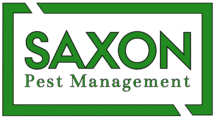Winter means rodents like rats and mice will be looking for warmth, and your Harold Hill home could be their next target. These pests don’t just invade your space; they bring health risks and can damage your property. Staying vigilant is key! But why do they become so active in colder months? And how can you spot an infestation early? This guide will break down the essential details, including insights from recent studies on rodent behavior, to help you keep your home pest-free. We’ll cover practical tips for prevention and clear guidance on when to call in the experts. Don’t let critters take over this winter be prepared!
The Seasonal Surge: Why Rodent Activity Peaks in Winter
Rodents are warm-blooded mammals, just like us. When the cold weather arrives, their primary instincts drive them to seek out three things: warmth, food, and shelter. Our homes in Harold Hill provide the perfect trifecta. The cozy insulation, readily available food in our pantries, and countless hiding spots make our properties an ideal winter retreat for rats and mice.
This seasonal migration is a survival mechanism. As outdoor temperatures become unbearable and natural food sources dwindle, rodents are forced to find more hospitable environments. This leads to a noticeable increase in infestations during the winter months.
Climate Change and Urban Environments: A Perfect Storm
Longer, warmer autumns followed by sudden cold snaps can create a “perfect storm” for rodent infestations. Mild weather allows rodent populations to breed for longer periods, leading to a larger population seeking shelter when the cold finally hits.
Urban areas like Harold Hill offer an abundance of resources that help rodent populations thrive. These include:
- Food Waste: Overflowing bins and improperly stored rubbish provide a consistent food source.
- Sewer Systems: The network of drains and sewers offers a protected highway for rats to travel throughout the area.
- Building Density: Closely packed houses and buildings make it easy for rodents to move from one property to another.

Natural Food Shortages Drive Rodents Indoors
During spring and summer, rodents can easily find food outdoors. Berries, seeds, grains, and insects are plentiful. However, as winter arrives, these natural food sources disappear. The frozen ground and dormant vegetation leave them with few options.
This scarcity drives them indoors in search of their next meal. Once inside, they are not picky eaters. They will happily feast on:
- Unsealed food in pantries (cereal, grains, pet food)
- Crumbs left on floors and countertops
- Fruit left in bowls
- Rubbish in indoor bins
Nesting Habits: Where Rodents Make Themselves at Home
Once inside, rats and mice will look for dark, secluded, and undisturbed areas to build their nests. They use soft materials like shredded paper, fabric, insulation, and cardboard to create a warm and comfortable space for their young.
Common nesting spots in a home include:
- Lofts and Attics: The insulation provides excellent nesting material and warmth.
- Wall Cavities: The empty spaces between walls are a perfect, hidden location.
- Behind Appliances: The warmth from refrigerators and ovens makes these spots attractive.
- Under Floorboards: This offers a hidden and protected environment.
- Cluttered Garages and Sheds: Piles of boxes and unused items create ideal hiding places.
Health Risks: Diseases Carried by Winter Rodents
A rodent infestation is more than just a structural problem; it’s a serious health hazard. Rats and mice are known carriers of numerous diseases that can be transmitted to humans.
- Hantavirus: Spread through contact with rodent urine, droppings, or saliva.
- Leptospirosis: Transmitted through contaminated water or food.
- Salmonellosis: Caused by consuming food or water contaminated with rodent feces.
These diseases can be spread directly through bites or indirectly through contact with contaminated surfaces, food, or water. Rodents also carry fleas, ticks, and mites, which can introduce other diseases into your home.
While specific numbers for rodent-borne diseases in the UK can be hard to pinpoint, the health risks are well-documented. For instance, Weil’s disease, a severe form of leptospirosis primarily carried by rats, sees around 50-70 reported cases in England and Wales each year, with some proving fatal.
Salmonella, often linked to rodent contamination of food sources, is a more common issue, causing thousands of cases of food poisoning annually across the UK. These examples highlight the significant public health risks that unchecked rodent populations pose in our homes and communities.
Structural Damage: The Cost of Rodent Infestations
Rodents have teeth that grow continuously, which means they need to gnaw constantly to keep them filed down. This behavior can cause extensive and costly damage to your property.
Common types of damage include:
- Gnawed Electrical Wires: This creates a serious fire hazard.
- Damaged Insulation: Rodents will tear up insulation for nesting material, reducing your home’s energy efficiency.
- Chewed Wooden Beams and Joists: Over time, this can weaken the structural integrity of your home.
- Destroyed Pipes: Gnawing on plastic and metal pipes can lead to leaks and water damage.
Rapid Reproduction: How Quickly Rodent Populations Grow
One of the most alarming aspects of a rodent infestation is how quickly it can spiral out of control. A single pair of rats can produce several hundred offspring in a year, and mice reproduce even faster. A small problem can become a major infestation in just a few months. This rapid breeding cycle is why it’s crucial to act at the first sign of a problem.
Signs of Infestation: What to Look Out For
Because rodents are nocturnal and naturally shy, you might not see them directly. However, they always leave behind tell-tale signs of their presence.
- Droppings: Small, dark, pellet-shaped droppings are often found along walls, in cupboards, or near food sources.
- Gnaw Marks: Look for chew marks on furniture, baseboards, electrical wires, and food packaging.
- Nests: Piles of shredded paper, fabric, or other soft materials in hidden corners are a clear sign of nesting.
- Strange Noises: Scratching, scurrying, or squeaking sounds in walls, ceilings, or under floors, especially at night.
- Tracks and Smudges: Greasy marks along walls and baseboards are caused by rodents rubbing against surfaces as they travel.
5 Preventative Measures: Keeping Rodents at Bay
Prevention is always the best strategy. Taking proactive steps can make your home far less attractive to rodents.
- Seal Entry Points: Inspect the exterior of your home for any cracks, gaps, or holes. Seal them with steel wool, caulk, or wire mesh. Pay close attention to areas around pipes, vents, and utility lines.
- Store Food Properly: Keep all food, including pet food, in airtight containers made of glass or metal.
- Maintain Cleanliness: Clean up spills and crumbs immediately. Don’t leave dirty dishes in the sink overnight.
- Secure Rubbish: Use bins with tight-fitting lids and store them away from the house if possible.
- Declutter Your Property: Reduce potential hiding spots by clearing clutter from your home, garage, and garden.
Relevant Statistics on Pest Prevention
Here are some key statistics that highlight the importance of effective pest prevention:
| Pest Type | Percentage of Homes Affected | Common Cause |
| Rodents (e.g., mice) | 29% in urban areas | Easy access to food and shelter |
| Cockroaches | 30% in multi-family housing | Poor sanitation and lack of pest control |
| Ants | 56% during summer months | High temperatures and food availability |
| Termites | $5 billion annual property damage (U.S.) | Undetected infestations in wood structures |
| Bed Bugs | Reported cases up 4.5X since 2004 | Increased travel and unclean living spaces |
Sources include data from the National Pest Management Association (NPMA) and the U.S. Census Bureau. This data demonstrates the necessity of taking early prevention measures to safeguard your home and health.
Your Next Steps
Dealing with a rodent infestation can be overwhelming, especially given the health risks and potential for rapid population growth. While preventative measures can be effective, an existing infestation often requires professional intervention. If you’ve seen any of the signs mentioned above, it’s time to act.
Professional pest control experts have the knowledge, tools, and experience to safely and effectively eliminate rodents from your home. They can identify entry points you might have missed and implement a comprehensive treatment plan to ensure your home remains pest-free. Don’t let a small problem turn into a major crisis.
Summary
Rodent infestations pose serious risks to both health and property. Recognizing early signs, such as droppings, gnaw marks, and unusual noises, is crucial for addressing the issue promptly. While preventative measures like sealing entry points and maintaining cleanliness can help, professional pest control services are often necessary to effectively eliminate the problem and prevent future infestations. Acting quickly can save you from significant damage and ensure a safe, pest-free home.
If you’re dealing with a rodent problem or want to ensure your home stays protected, Saxon Pest Management is here to help. Our experienced team offers reliable, effective solutions tailored to your needs. Don’t wait until the problem worsens contact Saxon Pest Management today for a free consultation and take the first step toward a pest-free home!






















